SATURDAY MORNINGS IN OSIJEK Top picks for your Saturday morning stroll
STOP 1: City market Elixirs of life
If you want to feel Osijek’s heartbeat, head to the central Saturday market (pijaca, as the locals call it). There are smaller neighbourhood markets around, sure, but the main one is located on Gajev Trg and proudly carries the title "the belly of the city." The customers and producers greet each other like old friends — and some like family — bonded by trust and shared stories. Fresh fruits and veggies, meats, eggs, cheese, flowers... all sourced from local family farms, many of which are proudly certified organic.
Chef Saša Vojnović knows the market like the back of his hand. His partner, kinesiotherapist Maja Diklić, is a huge advocate for healthy living — and where better to stock up on nature’s best than here?
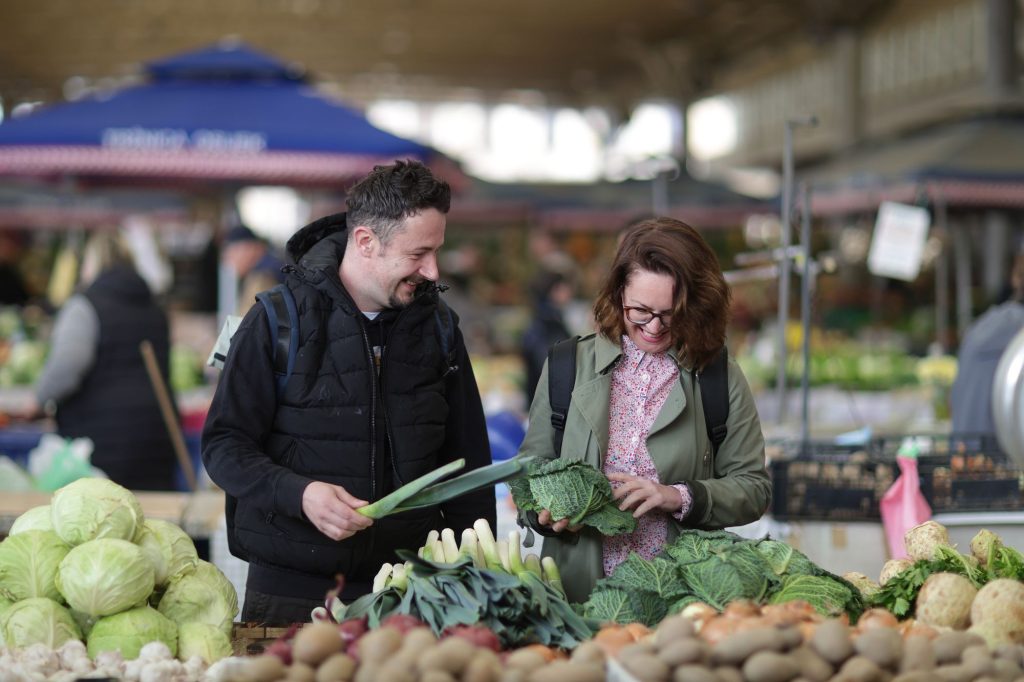
“The market isn’t just where we buy food,” says Saša. “It’s an experience that blends tradition, community, and top-quality ingredients.” “We love that everything is fresh and seasonal, and the variety depends on the rhythm of nature,” Maja adds.
Beyond the produce, it’s the people who make it special. “The chats with the producers, the trust, there’s a vibe you just don’t get in a supermarket. It’s a social hub where people share advice, swap recipes, and point you to the best pick of the day. Plus, the aromas of fresh herbs, fruits, flowers, all blended with the colourful stalls give the place such a lively energy. Shopping here isn’t just practical, it’s a way to support local producers and enjoy the authentic tastes of our region,” they say.
STOP 2: Knjižara Nova bookshop Food for the soul
After feeding your body at the market, it’s time to nourish your soul. Just a short walk from Gajev Trg to Starčević Square will take you to Nova, a bookshop nestled just by the co-cathedral of St. Peter and Paul. There you’ll find books, children’s stories, and even fresh souvenirs — like tote bags and bum bags featuring the stylish #HeadOnEast design.
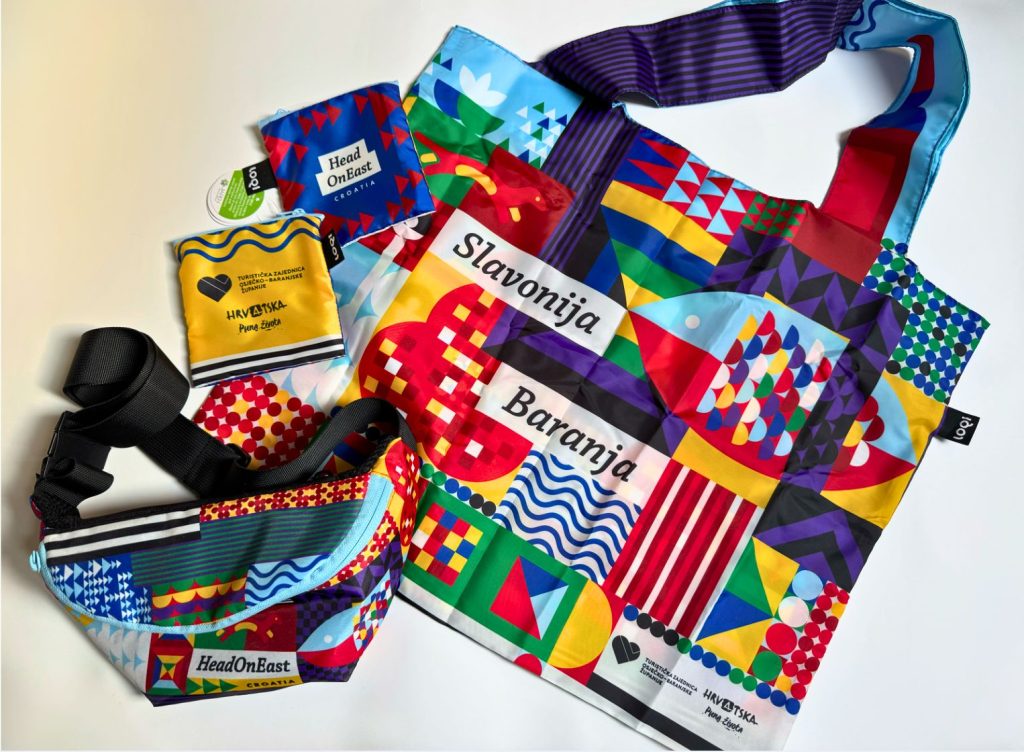
Writer and translator Ivana Šojat considers Nova to be a cultural cornerstone for Osijek locals. “It’s more than a bookshop, a meeting point for dreamers, scholars, creative souls. It’s part of the city’s identity,” says Ivana, one of Croatia’s most acclaimed authors whose works have been translated into Italian, English, German, Turkish, Slovenian, Polish, Bulgarian, Macedonian — and soon, Hungarian and Albanian too.
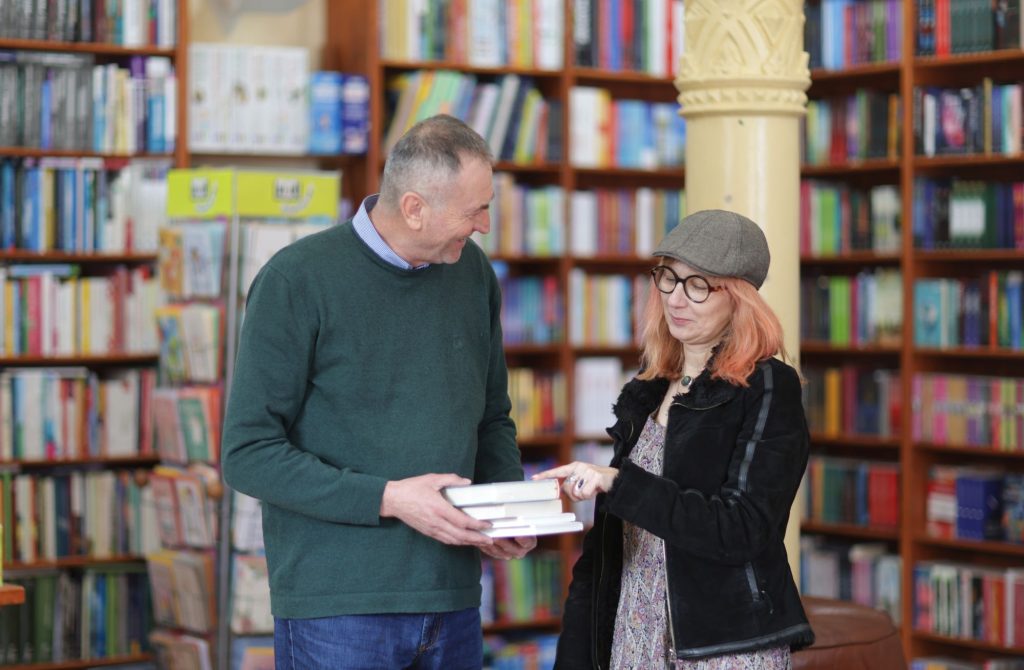
Thanks to its tireless owners, the husband-and-wife duo Melita and Ivica Vuletić, Nova has spent over 30 years establishing its place as one of Croatia’s finest independent bookstores. “Every book here is chosen with care and love. Come for inspiration, a recommendation, or simply to enjoy the smell of books,” says Professor Ivica Vuletić.
STOP 3: European Avenue - Osijek’s secession row Urban identity
From Nova, walk straight down Kapucinska Street and on to European Avenue, one of the city’s most striking architectural ensembles, known locally as the secession row. The section between the corners of Vjekoslava Hengla and Radićeva Streets down to the corner with the Cardinal Stepinac Street makes for one of Osijek’s most striking stretches.
“This residential row is a defining image of Osijek and one of the best-preserved examples of its kind, not just in Croatia but across Central Europe,” says Darija Cvitan, an art historian and conservator, head of the Osijek Restoration Department.
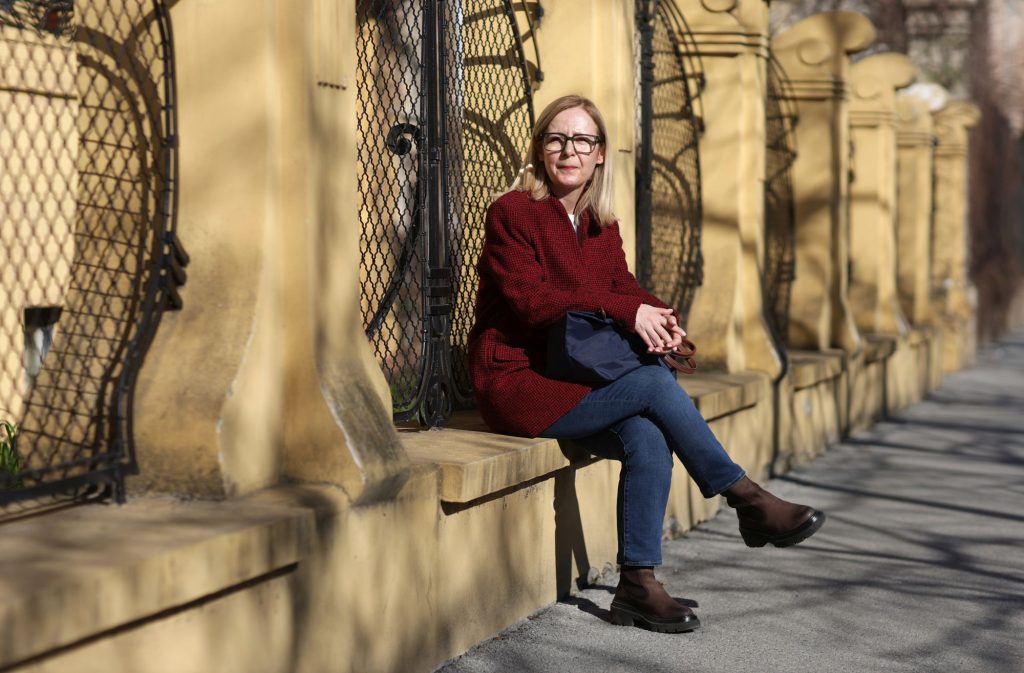
Its southern side features grand historic public buildings from the late 1800s, while a few years later a row of elegant one- and two-story rental houses popped up opposite them, originally owned by prominent lawyers, industrialists, and landowners.
“The buildings are rich with Art Nouveau details — stucco decorations inspired by local flora and fauna, geometric shapes, ornamental vases, and stylized masks and faces,” explains Darija. Even new materials like concrete, steel, and iron were introduced here, giving the walls a chic monochrome look. Make sure you get your cameras out for this lively journey through time.
STOP 4: The Museum of Slavonia A treasure chest
Follow the tram tracks under leafy branches, passing Osijek’s parks and green areas, and head straight to the baroque Osijek citadel (Tvrđa). In its Holy Trinity Square, you'll find one of the oldest and largest museums in Croatia.
“Founded in 1877, the Museum of Slavonia holds nearly 130 collections, preserving the cultural, historical, natural, and artistic heritage of Osijek and Slavonia, from ancient times to the present. Although two new museums have since been created from its materials, the Museum of Slavonia still preserves a quarter of a million inventoried artifacts.
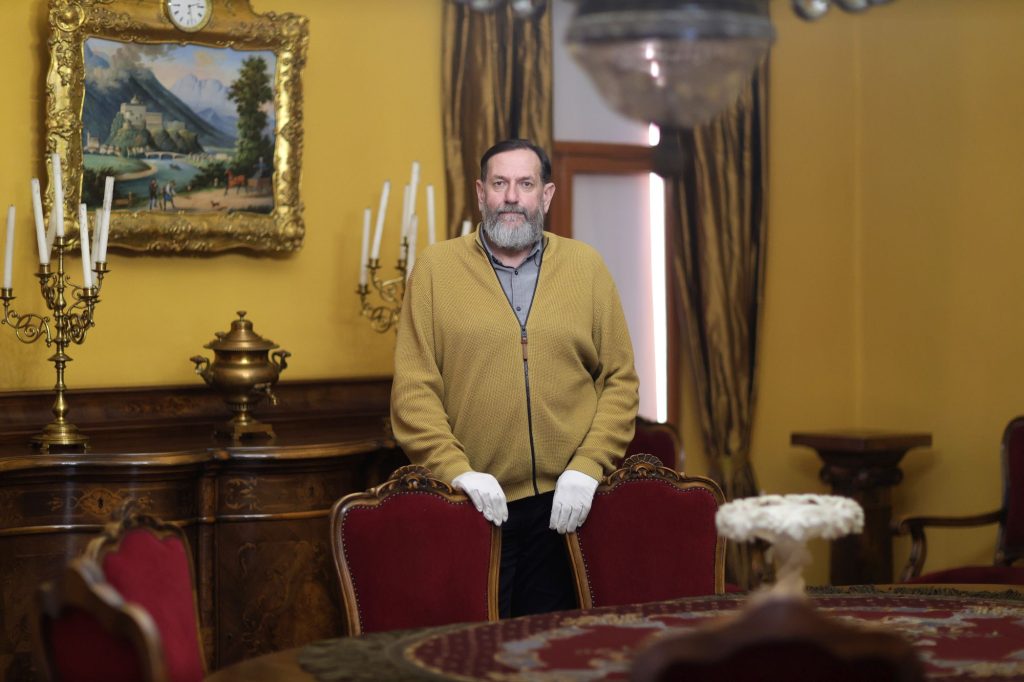
Its curators regularly rotate the thematic exhibitions, giving locals and tourists fresh ways to explore the vast collections. It is open Tuesday to Saturday from 10 a.m. to 6 p.m., and entry is free on Saturdays,” says senior curator Grgur Marko Ivanković.
The Museum of Slavonia allows for a peek into Osijek’s urban past and village life across Slavonia and Baranja from the times of our ancestors. And don’t forget to stop by the gift shop.
STOP 5: Osijek promenade Synergy of the elements
From Tvrđa, head down through the Water Gate to the Drava River promenade, one of the longest riverside walkways in Europe.
“To me, the Osijek Promenade isn’t just a riverside walk. Here the city breathes with all its might, this is where past meets future, the hustle and bustle of the city meets peace and nature. As I walk, run or ride my bike, I feel the rhythm of the river harmonizing my thoughts and bringing me inner peace. This reminds me of how beautiful and special Osijek is, bursting with life, yet offering plenty of hidden corners. For me, the promenade is a meeting point, a symbol of freedom, connection and belonging", famous Osijek musician Igor Delač describes his fascination.
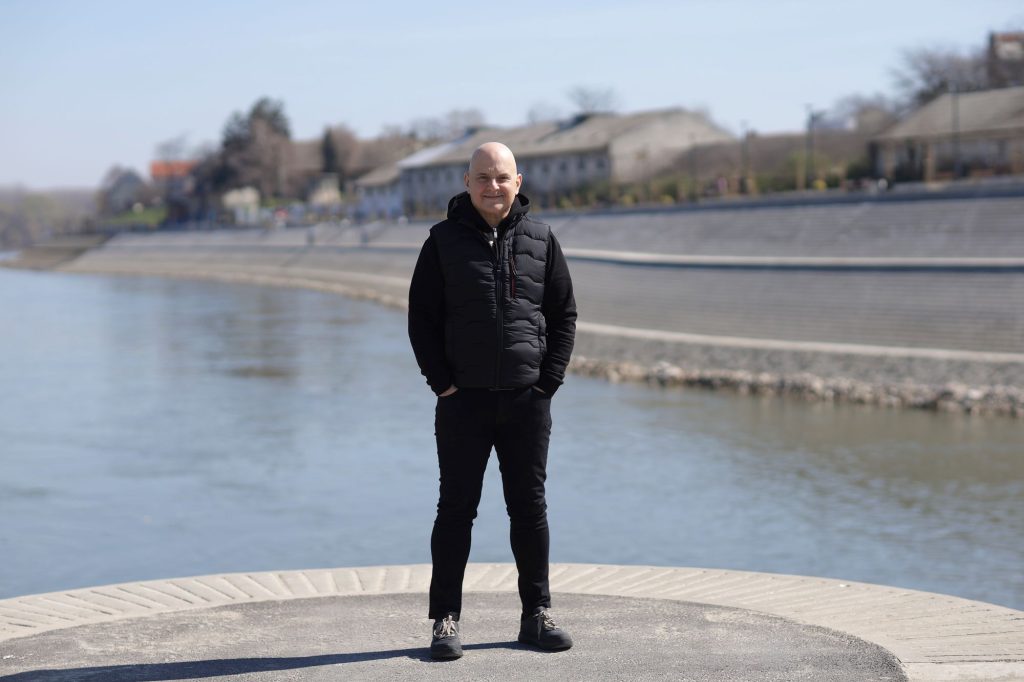
After facing some health challenges a few years ago, Igor started running, often right here. “I’m especially proud that our charity race Osijek runs and so can you — Gift your kilometres, finally, in its sixth edition, connected Osijek’s Upper and Lower Towns with the old town, which became the foundation for the City Day celebrations,” he explains.
Don’t feel like running? No worries. There are dedicated walking and cycling paths, or you can take a ride on the Kompa (river ferry), a rowboat, or even a speedboat.
STOP 6: Bajta, Kopika Beach The joy of living
The best way to discover a city is by learning what makes its people smile. In Osijek, that has to be the beloved riverside swimming spot known as Kopika, which short for its famous namesake, the Copacabana beach.
"There were a few sad summers when Kopika was empty even in July, but then, fortunately, it had its renaissance, and several bars and cafés opened there. Bajta has stood out from the very beginning. The guys who run it decided not to close with the first signs of autumn, but kept it going for each ray of sunshine, no matter the wind and cold," reveals the chronicler of the city's joys of life, manager Davor Brmež.
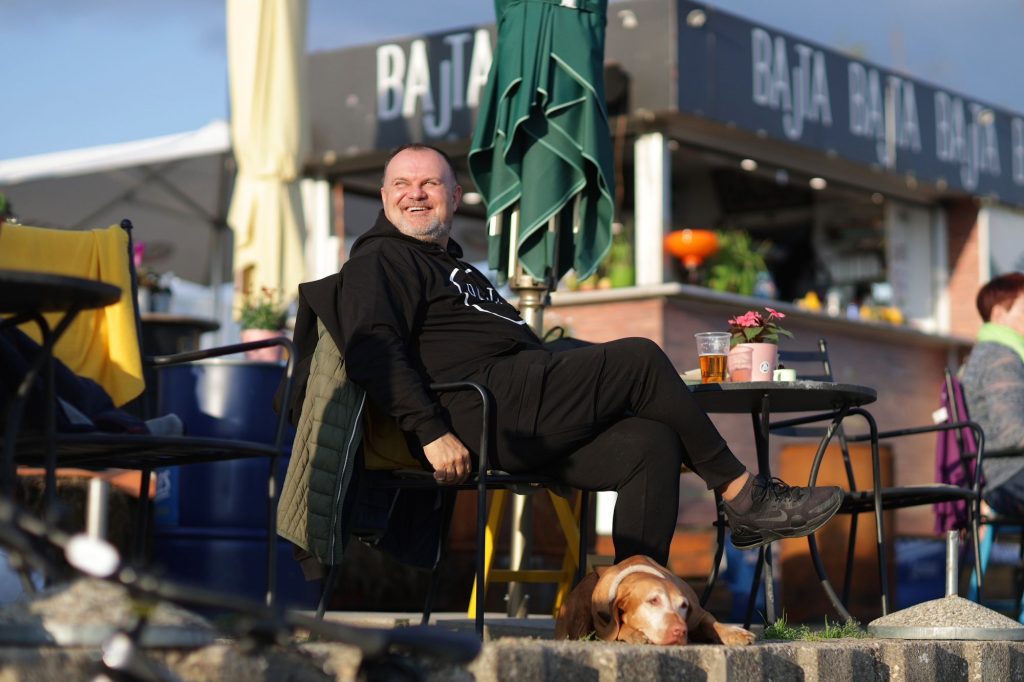
He realized, he explains, that Bajta is not just a place where you can grab a drink. "You go there to witness the most beautiful sunset in the world, listen to music that you can’t hear in restaurants, see the crew, walk your dog or spend a few moments with the river. All of this is possible because Ante, Ivan and the rest of the team don’t just follow trends — they have become one with the space that they enriched by persistently refusing to let bad weather stop them. Bajta is open whenever needed," Brmež is convinced.
Don't miss Bajta. "Especially on Saturdays! Happy hour isn't just happy-hour, you get to share the city’s energy. They'll charge for the drinks, but they'll serve good vibes for free," says Brmež, Davor concludes his Saturday stroll.
Written by: Ivana Rab Guljaš